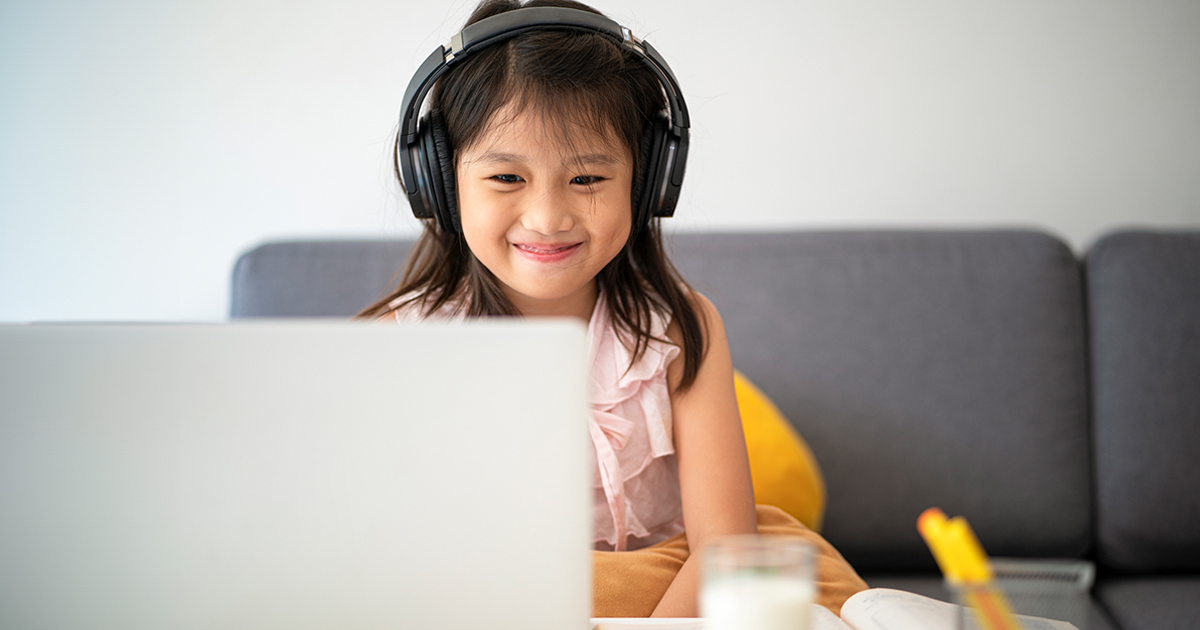
With the closure of school buildings fundamentally disrupting the way students receive services, the COVID-19 pandemic has changed the national conversation about education. But even acknowledging the enormous challenges that face students and teachers in remote teaching and learning, it is worth keeping our eyes open for the new opportunities that learning from home might make available. One such opportunity is the potential of remote learning to increase the connection between schools and families, which could in turn help teachers employ innovative culturally responsive practices, addressing social and institutional barriers that contribute to disparities in students’ outcomes. At the core, culturally responsive practices seek to dissolve artificial separations between students’ academic experiences and their lived experiences at school, home, and in their community. Now that the pandemic has erased the physical separation between home and school, educators have the opportunity to employ culturally responsive practices to address the academic separations, too.
Although rigorous research on the impacts of culturally responsive practices—that is, research using a comparison group in which some experience these practices and other do not—is limited, a few studies have found improvements in outcomes such as academic achievement and classroom behavioral management.[1] Although further rigorous and well-designed research is necessary to determine the effectiveness of culturally responsive practices, researchers and educators have identified several promising practices:[2]
- Construct and enact an equity vision that lays out a framework for full and equal participation of all students in their learning and growth during times of remote learning. Are resources provided for the multiple languages spoken in the district? How are learning experiences structured given that some students’ caregivers might be essential workers that are unable to actively monitor students’ work during the day?
- Build relationships with students and collaborate with families who experience stresses and anxieties that could impede learning. Educators might not recognize all these issues if they are not reaching out to families. For example, economic or food insecurity will eclipse educational concerns. Checking in with families through phone calls, text messages, or email presents an opportunity for educators to connect with families facing hardships and suggest helpful resources. Now that teachers must connect with students at home for their studies, they can use that as an opportunity to better connect with their families, too.
- Support students, families, and communities by exploring social justice and community issues. Pandemics are socially disruptive. Teachers might consider tailoring their content and activities to help empower students to take action to improve health outcomes for their community. For example, an art teacher might ask students to create digital art promoting social distancing that students can share on social media.
- Engage students by building on their experiences. Students could be grappling with the adjustment to remote learning, and teachers can create opportunities for them to process those experiences. A literacy teacher might, for example, ask students to explore and develop poetry that helps them process their feelings and experiences.
- Engage in self-reflection to foster equity. Little rigorous evidence yet exists about the efficacy of culturally responsive practices, so educators should reflect on the degree to which these practices have tangibly and measurably improved their students’ outcomes. Better yet, they can help develop that rigorous evidence using tools such as the Evidence to Insights Coach to examine how their culturally responsive practices improve students’ outcomes. For example, a teacher employing different culturally responsive practices with students might be uncertain which strategies work best. Using the Evidence to Insights Coach will help educators understand how effective their approaches are and at the same time generate evidence on practices that help students historically underserved by the education system. (Educators who are interested in this practice should sign up for our webinar on the Evidence to Insights Coach on April 24).
The path forward for states, districts, and schools will be difficult, but educators have responded to the needs of their students with innovation and compassion. With many schools staying closed until the end of the school year, leaders must consider their continuity of learning plans to make the most of this disruption. Integrating culturally responsive practices should be part of that conversation.
[1] Portes, P., Canché, M. G., & Whatley, M. (2017). Early evaluation findings from the instructional conversation study: Culturally responsive teaching outcomes for diverse learns in elementary school. American Educational Research Journal, 55(3), 488–531. https://eric.ed.gov/?id=EJ1180090
Kelley, H. M., Siwatu, K. O., Tost, J. R., & Martinez, J. (2015). Culturally familiar tasks on reading performance and self-efficacy of culturally and linguistically diverse students. Educational Psychology in Practice, 31(3), 293–313. https://eric.ed.gov/?id=EJ1070705
Bradshaw. C. P., Pas, E. T., Bottiani, J. H., Debnam, K. J., Reinke, W. M., Herman, K. C., & Rosenberg, M. S. (2018). Promoting cultural responsivity and student engagement through Double Check coaching of classroom teachers: An efficacy study. School Psychology Review, 47(2), 118–134. https://eric.ed.gov/?id=EJ1181996
[2] Aceves, T. C. & Orosco, M. J. (2014). Culturally responsive teaching (Document No. IC-2). University of Florida, Collaboration for Effective Educator, Development, Accountability, and Reform. http://ceedar.education.ufl.edu/tools/innovation-configurations/
Krasnoff, B. (2016). Culturally responsive teaching: A guide to evidence-based practices for teaching all students equitably. Region X Equity Assistance Center at Education Northwest. https://educationnorthwest.org/resources/culturally-responsive-teaching-guide-evidence-based-practices-teaching-all-students
Piazza, S. V., Rao, S., & Protacio, M. S. (2015). Converging recommendations for culturally responsive literacy practices: Students with learning disabilities, English language learners, and socioculturally diverse learners. International Journal of Multicultural Education, 17(3). https://eric.ed.gov/?id=EJ1104910
Trumbull, E. & Pacheo, M. (2005). Leading with diversity: Cultural competencies for teacher preparation and professional development. The Education Alliance at Brown University. https://eric.ed.gov/?id=ED494221
Cross-posted from the REL Mid-Atlantic website.



